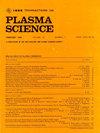单级电磁感应线圈发射装置电枢悬浮力影响因素研究
IF 1.5
4区 物理与天体物理
Q3 PHYSICS, FLUIDS & PLASMAS
引用次数: 0
摘要
在电磁感应线圈发射器(EICL)重力感应错位导致电枢偏离,导致不平衡的力量和潜在的碰撞在发射管。为了缓解这一问题,本文进行了一项研究,探讨了影响电枢悬浮力的因素。这项学术工作提出了一个悬浮力的数学模型,使用当前的细丝方法开发,并通过严格的验证证实了其准确性。提出了一种评估EICL中电枢悬浮力的方法,重点关注两个关键方面:悬浮力的峰值和达到该峰值所需的时间。通过改变EICL的一个或多个系统参数,分析了悬浮力的变化规律。本文对电磁感应线圈系统中系统参数变化对电枢悬浮力的影响进行了综合分析。动态和电磁耦合悬浮仿真的应用已扩展到EICL,为后续的排放控制设计原则以及电枢和管结构设计提供指导。本文章由计算机程序翻译,如有差异,请以英文原文为准。
Research on Influence Factors of Armature Levitation Force in Single-Stage Electromagnetic Induction Coil Launcher
Gravity-induced misalignment in the electromagnetic induction coil launcher (EICL) causes the armature to deviate, leading to unbalanced forces and potential collisions in the launch tube. To mitigate this issue, a study has been conducted to explore the factors influencing armature levitation force in the EICL. This scholarly work presents a mathematical model of levitation force, developed using current filament methods, and substantiates its accuracy through rigorous validation. A methodology has been proposed to assess the levitation force of the armature in EICL, focusing on two key aspects: the peak value of the levitation force and the time required to achieve this peak. By altering one or multiple system parameters of the EICL, an analysis of the levitation force variation patterns has been performed. A comprehensive synthesis has been conducted to elucidate the impact of systemic parameter variations on the armature levitation force in electromagnetic induction coil systems. The application of dynamic and electromagnetic coupling levitation simulation has been extended to the EICL, offering guidance for subsequent design principles related to emission control, as well as armature and tube structures.
求助全文
通过发布文献求助,成功后即可免费获取论文全文。
去求助
来源期刊

IEEE Transactions on Plasma Science
物理-物理:流体与等离子体
CiteScore
3.00
自引率
20.00%
发文量
538
审稿时长
3.8 months
期刊介绍:
The scope covers all aspects of the theory and application of plasma science. It includes the following areas: magnetohydrodynamics; thermionics and plasma diodes; basic plasma phenomena; gaseous electronics; microwave/plasma interaction; electron, ion, and plasma sources; space plasmas; intense electron and ion beams; laser-plasma interactions; plasma diagnostics; plasma chemistry and processing; solid-state plasmas; plasma heating; plasma for controlled fusion research; high energy density plasmas; industrial/commercial applications of plasma physics; plasma waves and instabilities; and high power microwave and submillimeter wave generation.
 求助内容:
求助内容: 应助结果提醒方式:
应助结果提醒方式:


